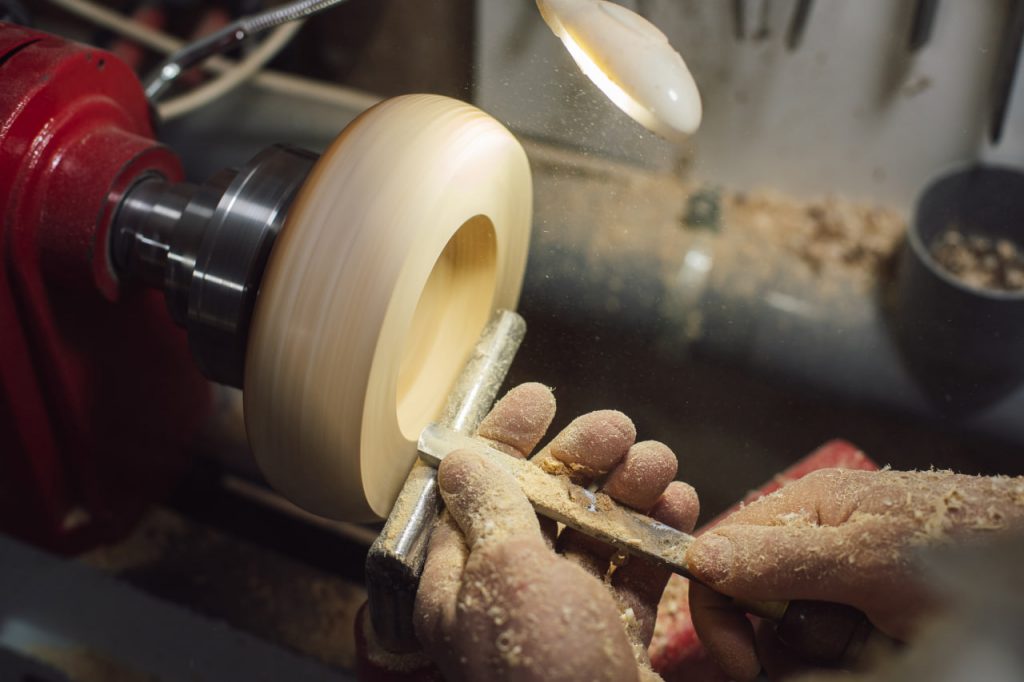As someone who’s always had a fascination with woodworking, the idea of trying woodturning had been on my mind for a long time. However, like many beginners, I was both excited and apprehensive. The tools looked intimidating, and I wasn’t sure where to start. Most importantly, I knew that safety was key. After all, woodturning involves sharp tools, high-speed spinning wood, and the potential for accidents. I wanted to learn in a way that would allow me to be both safe and effective, so I signed up for Woodturning Basics.
Looking back, this decision was one of the best I’ve made in my woodturning journey. Not only did the course teach me the technical skills I needed to become proficient, but it also instilled a deep respect for safety. Here’s what I learned about mastering both safety and technique—and why it’s crucial for anyone starting out in woodturning.
Safety First: A Priority from the Start
One of the things I loved most about Woodturning Basics was how seriously the course took safety. From the very first lesson, safety was emphasized in every single step. Before even touching the tools, I learned about the importance of setting up a safe workspace. Proper lighting, an organized bench, and the right equipment (like a sturdy apron and safety glasses) were highlighted as essential to creating a safe environment.
The instructors made sure to demonstrate proper techniques for handling the tools before allowing us to dive into actual turning. This wasn’t just about learning how to use the lathe—it was about understanding the risks and taking preventative measures. For example, I learned how to properly secure the wood onto the lathe, which is vital to avoid accidents from flying debris or unbalanced pieces.
But the safety lessons didn’t stop there. I was taught about the importance of body positioning while working with sharp tools. How I stood, how I held the tools, and how I moved all played a role in preventing injury. I never realized how subtle adjustments could make such a difference in my safety, but now I know that good technique is synonymous with safety.
Learning the Tools and Techniques
Once I had the safety basics down, it was time to start turning wood. At first, I was overwhelmed by the variety of tools—gouges, chisels, scrapers, and others—each with its own function. But Woodturning Basics broke down the complexity into manageable chunks. The lessons made it easy to understand which tool to use for each task and how to use it effectively.
The instructors demonstrated how to approach the wood with precision, ensuring that I knew exactly how to make each cut with confidence. The course taught me to be patient, allowing each step of the process to unfold naturally. It wasn’t about rushing through the work—it was about learning to listen to the wood and respecting the process.
Through these lessons, I learned how to properly control the tools. For example, I discovered how to keep my hands steady and avoid applying too much pressure when making cuts, which was crucial to maintaining control and avoiding mistakes. This is where the balance between safety and technique really became clear: knowing when to apply force and when to let the tool do the work is a skill that takes time to develop, but it’s one that leads to both safer and better results.
The Importance of Patience and Practice
One of the most valuable lessons I learned was the importance of practice. Early on, I made plenty of mistakes. I didn’t always get the cuts right, and sometimes the finish wasn’t as smooth as I wanted. But each time I made a mistake, I didn’t just learn how to correct it—I learned how to be patient with myself.
In the beginning, I often found myself rushing to finish a project, but I soon realized that the key to mastering technique is taking my time. The more I practiced, the more comfortable I became with the tools and the process. I started to recognize the rhythm of the lathe, how the wood responded to each cut, and how small adjustments to my technique could make a big difference in the final product.
Developing Confidence Through Safety and Skill
Over time, my confidence grew. What started as a timid approach to woodturning became a more natural and fluid process. I wasn’t worried about making mistakes anymore; instead, I focused on the quality of the work and how my technique could improve.
The safety principles that I had learned early on were now second nature. I didn’t have to consciously think about how to stand or how to hold my tools; it had become ingrained in my muscle memory. I was able to shift my focus from worrying about safety to concentrating on my craft.
The combination of mastering safety procedures and honing my technique allowed me to push the boundaries of what I could create. My projects became more refined and intricate, and I felt empowered to tackle more complex designs. This confidence wasn’t just in my ability to create—it was in knowing that I had the skills to do so safely and effectively.
Why Safety and Technique Go Hand-in-Hand
For anyone starting out in woodturning, I can’t emphasize enough how crucial it is to understand that safety and technique go hand-in-hand. Woodturning Basics taught me that the more skilled you become, the less you need to think about safety consciously. The key is learning to be aware of your surroundings, handling the tools with care, and respecting the material you’re working with. Once these habits become second nature, your technique improves, and your confidence soars.
Mastering both safety and technique has allowed me to pursue woodturning as a craft, not just as a hobby. It’s given me the peace of mind to work on bigger, more challenging projects and to focus on the joy of creating, knowing that I have the foundational skills to do so safely.
If you’re new to woodturning, or even if you’ve been at it for a while, I highly recommend focusing on mastering both safety and technique early in your journey. Woodturning Basics helped me develop both, and I’m now able to enjoy the process of turning wood with skill, confidence, and most importantly, safety.

